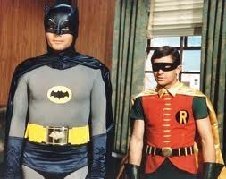The musk deer (Moschidae) of Asia and chevrotains (Tragulidae) of tropical African and Asian forests are separate families that are also in the ruminant clade Ruminantia; they are not especially closely related to Cervidae.
Deer appear in art from Paleolithic cave paintings onwards, and they have played a role in mythology, religion, and literature throughout history, as well as in heraldry, such as red deer that appear in the coat of arms of Åland. Their economic importance includes the use of their meat as venison, their skins as soft, strong buckskin, and their antlers as handles for knives. Deer hunting has been a popular activity since the Middle Ages and remains a resource for many families today.
Etymology and terminology
"The Stag Hunt of Frederick III, Elector of Saxony" by Lucas Cranach the Elder, 1529The word deer was originally broad in meaning, becoming more specific with time. Old English dēor and Middle English der meant a wild animal of any kind. Cognates of Old English dēor in other dead Germanic languages have the general sense of animal, such as Old High German tior, Old Norse djur or dȳr, Gothic dius, Old Saxon dier, and Old Frisian diar. This general sense gave way to the modern English sense by the end of the Middle English period, around 1500. All modern Germanic languages save English and Scots retain the more general sense: for example, Dutch/Frisian dier, German Tier, and Norwegian dyr mean animal.
For many types of deer in modern English usage, the male is a buck and the female a doe, but the terms vary with dialect, and according to the size of the species. The male red deer is a stag, while for other large species the male is a bull, the female a cow, as in cattle. In older usage, the male of any species is a hart, especially if over five years old, and the female is a hind, especially if three or more years old. The young of small species is a fawn and of large species a calf; a very small young may be a kid. A castrated male is a havier. A group of any species is a herd. The adjective of relation is cervine; like the family name Cervidae, this is from Latin: cervus, meaning stag or deer.
The highest concentration of large deer species in temperate North America lies in the Canadian Rocky Mountain and Columbia Mountain regions between Alberta and British Columbia where all five North American deer species (white-tailed deer, mule deer, caribou, elk, and moose) can be found. This region has several clusters of national parks including Mount Revelstoke National Park, Glacier National Park (Canada), Yoho National Park, and Kootenay National Park on the British Columbia side, and Banff National Park, Jasper National Park, and Glacier National Park (U.S.) on the Alberta and Montana sides. Mountain slope habitats vary from moist coniferous/mixed forested habitats to dry subalpine/pine forests with alpine meadows higher up. The foothills and river valleys between the mountain ranges provide a mosaic of cropland and deciduous parklands. The rare woodland caribou have the most restricted range living at higher altitudes in the subalpine meadows and alpine tundra areas of some of the mountain ranges. Elk and mule deer both migrate between the alpine meadows and lower coniferous forests and tend to be most common in this region. Elk also inhabit river valley bottomlands, which they share with White-tailed deer. The White-tailed deer have recently expanded their range within the foothills and river valley bottoms of the Canadian Rockies owing to conversion of land to cropland and the clearing of coniferous forests allowing more deciduous vegetation to grow up the mountain slopes. They also live in the aspen parklands north of Calgary and Edmonton, where they share habitat with the moose. The adjacent Great Plains grassland habitats are left to herds of elk, American bison, and pronghorn.
To read a lot more, go here: https://en.wikipedia.org/wiki/Deer
The deer hang around here and yesterday morning there were a couple of deer in my front yard eating grass and then walking outside my yard..... Later in the early evening there were 5 deer eating grass in my front yard and then laying down.
- 1 cup (2 sticks) butter
- 1 1/2 cups sugar
- 3 eggs
- 3 cups all-purpose flour
- 2 teaspoons baking powder
- 1 teaspoon vanilla extract
- 1 (21-ounce) can cherry pie filling
- Topping:
- 1/4 cup all-purpose flour
- 1/4 cup sugar
- 2 teaspoons butter
- 1 teaspoon ground cinnamon
- Preheat oven to 350º. Coat a 9- x 13-inch baking pan with cooking spray.
- In a large bowl, cream 1 cup butter and 1-1/2 cups sugar; add eggs, one at a time. Add 3 cups flour, the baking powder, and vanilla; mix well.
- Spread half the batter into prepared pan; spread cherry pie filling evenly over batter and, using a wet knife, cover evenly with remaining batter.
- In a small bowl, using a fork, mix together topping ingredients until crumbly. Sprinkle over batter.
- Bake 55 to 60 minutes, or until a wooden toothpick inserted in center comes out clean. Cool in pan on a wire cooling rack. Cut and serve.




1940 – Bill Medley, American singer and songwriter (The Righteous Brothers)


1941 – "Mama" Cass Elliot, American musician (d. 1974)
All you bilge rats, Aaaaaaaaaaaaarrrrrrrrrrrrgh! As you are out and about on September 19th, don’t be surprised if people are saying, “Ahoy Matie,” “Avast,” “Aye, Aye Capt’n,” “Land ho!” “Hornpipe,” and many other pirate-like phrases, because it’s International Talk Like a Pirate Day.
While ordering your coffee in the drive-thru, ask if they have change for gold bullion. Try testing your pirate language out at the library when asking for the location of Moby Dick. The pirate language always fairs well in rough seas. Settle a debate with “I’m right or I’ll walk the plank!”
When the boss gives you a new project, “Aye, aye, Capt’n,” is the correct response. However, beware calling the boss any frothy names. The goal of the day is not to lose your job.
To polish your persona, practice a swagger, limp or squint. Long days at sea give pirates unique qualities.
HOW TO OBSERVE TALK LIKE A PIRATE DAY
Anchor’s away! Get your sea legs and a barrel o’ rum. Feel free to join in anytime with your own version of Pirate-ese.
John Baur and Mark Summers (aka Ol’ Chumbucket and Cap’n Slappy) created this international day in 1995. Click here for the entire story!
Q. What should my pirate name be?
A. Here’s a great way to create your pirate name:
- Pick a color.
- Choose an animal.
- Name a profession.
- Put steps 1, 2, and 3 together to create your name.
For example: blue + clam + dancer = Blue Clam Dancer.













1 comment:
There was a deer 🦌, happily living in, of all places, Costa Mesa. It died yesterday, hit by an undoubtedly surprised driver.
I am making cherry coffee cake this week! Thank you for your recipes- they inspire a more cheerfully varied menu.
Gif bless
Post a Comment